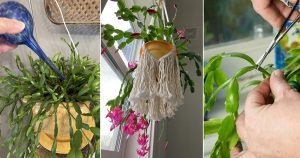What makes you happier than seeing your plants at their fullest? Here we are with the most proven tips to grow succulents with fuller leaves!
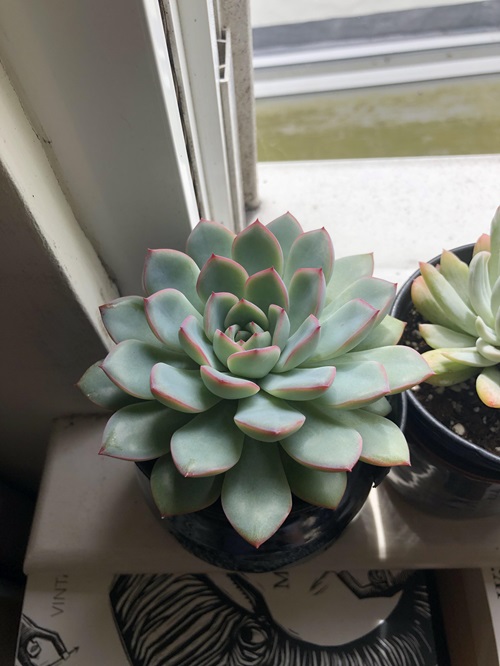
If you’ve ever wondered how some succulents look lush and full while others appear sparse and struggling, you’re not alone. Growing succulents with fuller leaves isn’t a mystery—it’s about mastering a few simple yet essential care techniques. No matter if you are a newbie or a pro, these tips will help you forever to care for your plants.
Easy Tips to Grow Succulents with Fuller Leaves
1. Start with Strong, Healthy Plants
A good start makes all the difference. Go with the succulents with plump, firm leaves and bright colors. Steer clear of plants with mushy, yellow, or translucent leaves—these are signs of overwatering or poor health. Healthy plants give you the best chance for fuller, happier growth.
Look for pests like mealybugs or spider mites before buying. These tiny troublemakers can spread to your other plants.
2. Use the Right Pot for Success
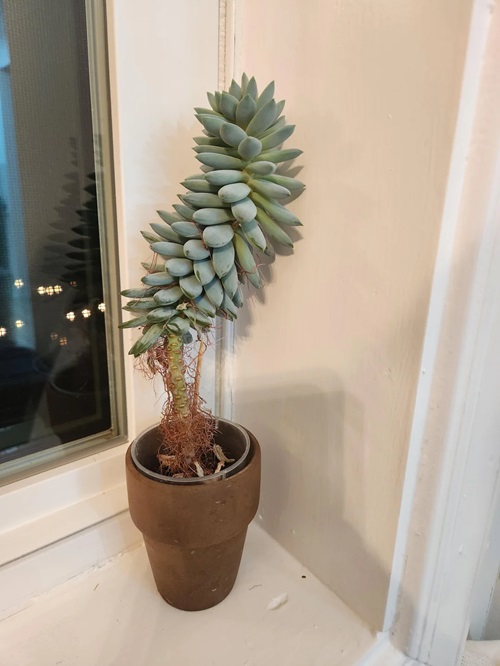
Choosing the right pot isn’t just about looks—it’s about health. Always go for pots with drainage holes so excess water doesn’t sit around and rot the roots. Terra-cotta pots are an excellent choice because they allow airflow and help moisture evaporate quickly.
Just avoid pots without drainage holes unless you’re an expert at monitoring water levels! If using decorative pots without drainage, place the succulent in a smaller draining pot first, and use the decorative one as a cover.
3. Get the Soil Right
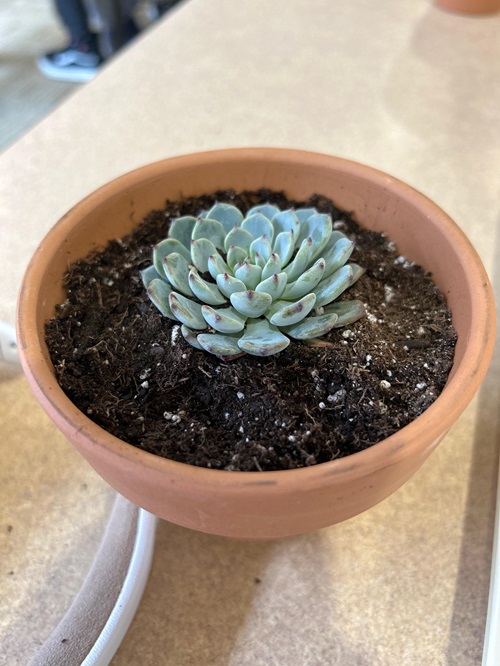
Succulents aren’t fans of regular garden soil. Instead, they love well-draining mixes with sand, gravel, or perlite. These ingredients let water flow easily while keeping just enough moisture for the roots. Using compact soil? That’s a big no—it suffocates your plant and invites root rot.
Tip: You can add activated charcoal to your soil mix—it helps absorb excess moisture and keeps the soil fresh for longer.
4. Nail the Watering Routine
Overwatering can cause the main issue for your garden. Water only when the soil is bone dry—this usually means every 7–10 days, depending on the season and humidity. When you water, do it deeply so the roots get a proper soak, but let the excess drain out completely.
Skip misting! It might seem helpful but often leads to fungal issues instead of fuller growth. If you’re unsure about watering, poke your finger or a pencil 2 inches into the soil—if it feels dry, it’s time to water.
5. Sunshine is Their Best Friend
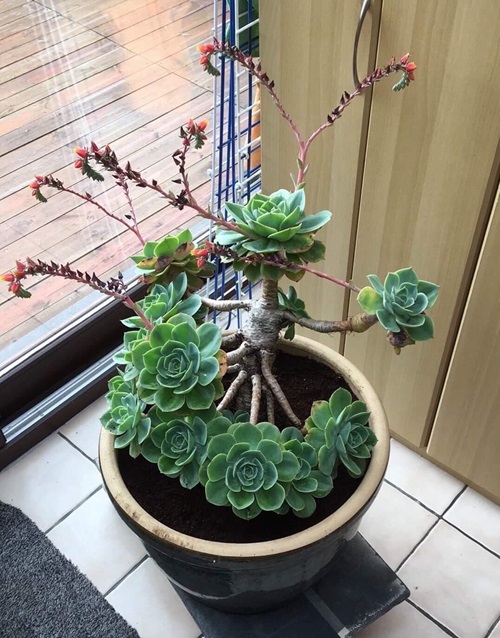
Succulents need bright, indirect light to stay compact and full. Without enough light, they can experience etiolation, where they stretch out and become leggy, losing their attractive, compact shape. Outdoor plants thrive with gentle morning sunlight, while indoor ones love bright spots near windows.
If you’re unsure about lighting, check out our article on various ways to give succulents the light they need (especially in winter) for tips to keep them healthy and happy. Here is some advice, avoid direct afternoon sun—it can scorch the leaves, leaving ugly brown spots. If outdoor temperatures exceed 90°F, provide shade to prevent heat stress.
6. Let Pups Grow for a Natural Look
Some succulents, like Haworthias or Aloes, love to sprout little pups. Instead of removing them right away, let them stay on the plant for a bit. This gives the pups time to grow bigger so that the whole plant looks fuller and more natural.
It’s especially great for larger pots, where the pups can fill in any empty spaces and create a lovely, overflowing look. Plus, it’s an easy way to grow more succulents without needing extra pots!
7. Feed Them Sparingly
Succulents don’t demand much food, but a little fertilizer during their growing season (spring and summer) can encourage lush leaves. And use a balanced, diluted fertilizer or one made for succulents and cacti. Avoid over-fertilizing, as it can lead to spindly growth.
Fertilize once a month during the growing season. And, avoid feeding during dormancy—this can confuse the plant’s natural cycle.
8. Trim for a Fuller Look
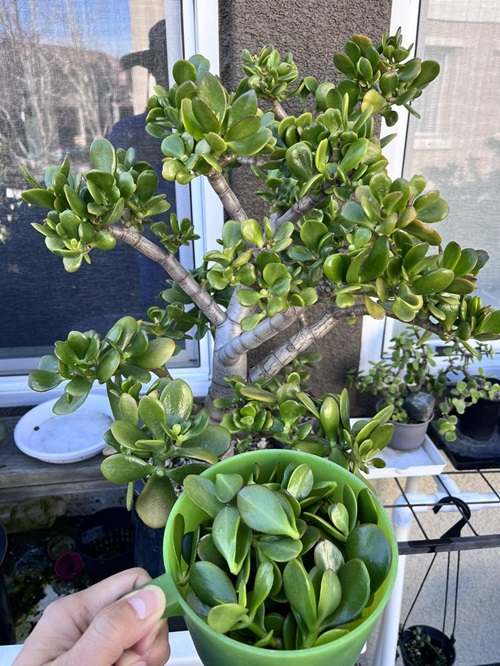
Don’t be afraid to prune! Snip off leggy stems or damaged leaves with clean scissors to encourage fresh growth. You can use the cuttings to propagate new plants and fill in sparse areas. Succulents are fantastic at bouncing back with a bit of trimming.
Tip: Sterilize your tools before pruning to avoid spreading diseases.
9. Adjust with the Seasons
Succulents change with the weather, and so should your care. Reduce watering in winter when they’re dormant, and move them to shaded spots during scorching summers. Adapting to their needs keeps them healthy all year long.
During dormancy, succulents grow slower and need less attention. Over-caring during this period can stress the plant.
10. Shield Them from Harsh Conditions
Succulents prefer consistency. Protect them from heavy rain, freezing temperatures, or extreme heat by moving them indoors or into sheltered spots. Inside, keep them away from drafty windows, air conditioners, or heaters. You can read our article on different ways to protect your succulent from frost and cold too to get more ideas!
Frost can be deadly for succulents. If you live in a cold climate, grow frost-hardy varieties like Sempervivums or Echeveria elegans.
11. Tackle Pests and Diseases
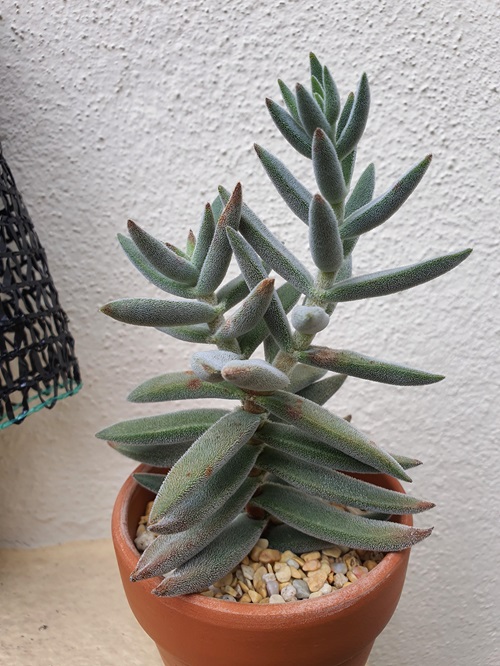
Pests like mealybugs, aphids, or spider mites can weaken your succulents, making their leaves sparse or unhealthy. Clean the leaves regularly, and if you spot pests, treat them with insecticidal soap or neem oil. Diseases like root rot or fungal infections often start with overwatering, so stay vigilant.
Mealybugs often hide in leaf crevices—check carefully when cleaning your plant. For persistent infestations, isolate the affected plant immediately to prevent the pests from spreading.
12. Keep Them Clean and Happy
Dust on leaves can block sunlight and reduce photosynthesis. Use a soft, damp cloth to clean your succulents occasionally. Clean plants not only look prettier but also absorb light better, giving you fuller, healthier leaves.
13. Group Rosette Succulents
We have saved the best hack for you in the last! If you’re growing rosette-shaped succulents like Echeveria or Sempervivum, don’t just stick to one plant—try planting a bunch of them together.
When you group these beauties, their neat, symmetrical shapes and colorful leaves will give a fuller and more beautiful sight to behold. It’s perfect for planters, garden beds, or even your favorite decorative pots.
So, with these simple and practical tips, growing succulents with fuller leaves becomes a breeze! If you’ve tried these methods or have some secret tricks up your sleeve, share them in the comments—your fellow plant lovers would love to hear from you!




